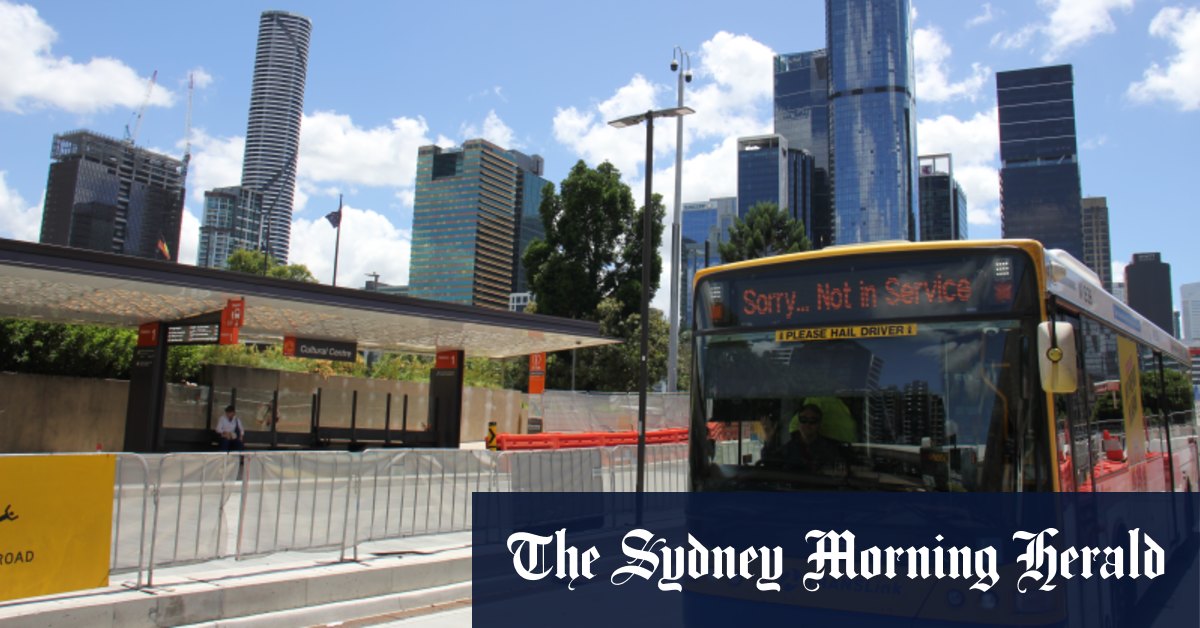Australia
‘More disruptive’ bus strikes planned as pay negotiations collapse

Brisbane Bus Strikes: A Growing Disruption to Commuters
Introduction to the Crisis
Brisbane is bracing itself for a wave of bus strikes that promise to be even more disruptive than previous actions. The strikes, scheduled for Wednesday, February 26, between 4 pm and 6 pm, target the busiest commuter day of the week, aiming to maximize the impact on the city’s transportation network. While school routes will be spared, the industrial action threatens to grind the city’s bus services to a halt during peak hours, leaving thousands of commuters stranded or forced to seek alternative travel arrangements.
The decision to escalate the disruptions comes after pay negotiations between the Brisbane City Council and the Rail, Tram and Bus Union (RTBU) broke down. The union rejected the council’s offer of a 7% wage increase over two years, arguing that the proposal did not adequately address the long-standing issue of backpay owed to drivers. Union representative Tom Brown described the negotiations as reminiscent of Groundhog Day, with the council repeating the same offers and excuses. “Yesterday’s negotiations can only be described as Groundhog Day. Same old council, same old BS,” he said in an interview with Brisbane Times. The stalemate has left commuters caught in the crossfire, facing the prospect of widespread disruptions to their daily routines.
The Union’s Perspective: Backpay andfair Compensation
At the heart of the dispute is the issue of backpay, with some drivers reportedly owed around $900. The RTBU has made it clear that resolving this issue is its top priority. Tom Brown emphasized that the union is willing to call off the strike if meaningful progress is made in the negotiations. “I’m quite happy to withdraw [the upcoming strike] if there is a significant breakthrough in negotiations today,” he said. However, the union has also made it clear that it is prepared to take more drastic action if its demands are not met.
The strike on February 26 is being framed as a “warning shot” by the union, a demonstration of its ability to disrupt services and a preview of more severe actions to come if the council does not relent. The earlier strike on Wednesday morning, which resulted in about 90 missed trips and over 200 disrupted or delayed services, was just a taste of what is to come. The union’s message is clear: it is willing to escalate the situation further if the council continues to resist its demands.
The Impact on Commuters and the Economy
The consequences of the strikes are far-reaching, affecting not only commuters but also the broader economy. The afternoon peak hours are the busiest time for public transportation in Brisbane, with thousands of people relying on buses to get home from work or school. Disruptions during this time will likely cause significant delays and overcrowding on other modes of transport, such as trains, as commuters scramble to find alternative ways to reach their destinations.
For many workers, the strikes could mean longer and more stressful journeys home, potentially impacting productivity and work-life balance. Small businesses and traders who rely on the afternoon commute to generate foot traffic may also feel the pinch. The economic ramifications of the strikes could be substantial, particularly if they continue or intensify in the coming weeks.
The Broader Context: A History of Industrial Action
The current dispute is not an isolated incident but rather part of a longer history of industrial action by the RTBU in Brisbane. Over the years, the union has consistently advocated for better wages, working conditions, and fair treatment for its members. While the council has made some concessions, such as the 7% wage increase offer, the union argues that these measures do not go far enough to address the pressing issues faced by drivers.
The RTBU has a history of using strike action as a last resort to pressure the council into taking its demands seriously. Previous strikes have shown that the union is willing to take bold action to protect the interests of its members, even if it means inconveniencing the public. This approach reflects the challenging balance between advocating for workers’ rights and minimizing disruption to essential services.
The Path Forward: Negotiations and Resolution
As the strike looms closer, all eyes are on the negotiations between the RTBU and the Brisbane City Council. The union has made it clear that it is open to further talks and is willing to withdraw the strike notice if a “significant breakthrough” is achieved. However, the council must be prepared to make substantial concessions to meet the union’s demands, particularly regarding the backpay issue.
For commuters, the situation remains precarious. While the union has assured that school routes will not be affected, the disruption to regular bus services during peak hours will still have a significant impact. Commuters are advised to plan ahead, explore alternative travel options, and stay informed about any updates or changes to the strike plans.
Conclusion: A Call for Resolution
The planned bus strikes in Brisbane highlight the pressing need for a resolution to the ongoing dispute between the RTBU and the council. While the union’s actions are driven by a desire to secure fair compensation and better working conditions for its members, the impact on commuters and the broader community cannot be ignored. The council must take the union’s demands seriously and work towards a negotiated settlement that addresses the key issues, particularly the backpay owed to drivers.
In the meantime, commuters are urged to remain vigilant and flexible, as the situation continues to unfold. The RTBU’s willingness to withdraw the strike notice if negotiations progress provides a glimmer of hope that the dispute can be resolved without further disruption. Ultimately, the goal for all parties involved should be to find a fair and sustainable solution that benefits both the drivers and the community they serve.











